#Paper Trading Simulator
Explore tagged Tumblr posts
Text
Fundamentals of Forex Market (₹999)
Start your journey in currency trading with a comprehensive module covering forex basics, market dynamics, key terminology, and chart reading without getting overwhelmed. Ideal for beginners seeking clarity and direction.
#Best Trading App#Best Trading App in India#Trading Course app#Forex and Crypto Trading App#Forex Trading for Beginners#Price Action Trading Strategy#How to Learn Trading#Free Online Trading Courses#Stock Market Trading Courses#Trading On The Stock Market#Financial Markets In India#How to Learn Stock Market Trading#Currency Exchange Trading#Best Forex Trading Platforms in 2024#Price Action Trading#Open a Forex Trading Account#Basic to Advance Trading#Technical Analysis in Forex Trading#Best Technical Indicator for Trading#Basics of Indian Stock Market#Paper Trading Simulator#Bearish Candlestick Patterns#Best Charting Software in India#Smart Money Concepts (SMC)#Objectives of Fundamental Analysis#Financial Markets in India#Bullish Candlestick Patterns#Double Top Chart Pattern#Free Price Action Trading PDF#Ascending Triangle Pattern
0 notes
Text
#investing#stock market#stock trading#equity trading#finance#financial literacy#learn stock market trading#paper trading#virtual trading#derivatives trading#putcall ratio#papertradingappindia#fundamentalanalysis#technical analysis#stock market india#stock market simulator#stockstowatch#ratio analysis
0 notes
Text
What are the limitations of paper crypto trading?

Paper trading, also known as simulated or virtual trading, allows individuals to practice trading strategies in a risk-free environment by using simulated money. While paper trading can be a valuable tool for learning and refining trading skills, it also has its limitations. Here are some common limitations associated with crypto paper trading:
Emotional Impact
One of the significant challenges of paper trading is that it doesn't replicate the emotional aspects of real trading. Traders may not experience the same psychological stress, fear, or excitement when using simulated money as they would with real funds.
Market Liquidity and Slippage
In a simulated environment, trades are often executed instantly at the displayed prices. In real markets, particularly during times of high volatility, there can be slippage—where the execution price may differ from the expected price due to changes in market conditions and liquidity.
Market Impact
Large trades in real markets can have an impact on prices. In paper trading, the impact of placing significant orders on the market is not accurately reflected, potentially leading to unrealistic expectations.
Technical Limitations
Paper trading platforms may not fully replicate the actual trading experience, especially when it comes to order execution, latency, and other technical aspects. Real trading involves dealing with order book dynamics, exchange APIs, and other factors that are not always accurately simulated.
Risk-Taking Behavior
Traders may take higher risks in paper trading than they would with real money since there are no real financial consequences. This behavior might not accurately reflect how a trader would act in a live trading scenario.
Lack of Live Market Data
Paper trading platforms may not provide the same live market data feeds as real exchanges. Traders might miss out on real-time information, news, and events that could impact market prices.
Execution Fills
In paper trading, orders are often filled at the displayed prices. In real markets, especially during periods of high volatility, getting orders filled at the desired price may be challenging.
Dividends and Fees
Some paper trading platforms may not accurately account for transaction fees, dividends, or other costs associated with real trading, which can impact the overall performance of a trading strategy.
Despite these limitations, paper trading remains a valuable tool for new and experienced traders alike to test and refine strategies, understand how different trading instruments work, and gain familiarity with trading platforms. To bridge some of the gaps between paper trading and real trading, individuals may eventually transition to trading with small amounts of real capital to experience the emotional and psychological aspects of live markets.
Reasons to try out stock market games in 2024
stock market games provide an excellent alternative to paper trading apps. They offer the opportunity to engage in simulated games, refining stock/crypto trading skills without the limitations of paper trading on other apps.
Here are some of the key reasons to try out stock market games on TradingLeagues in 2024:
It is an excellent way to gain practice and experience in trading
Fun and engaging games
Helps you build your confidence and skills before you start trading with real money
Teaches you valuable lessons about risk management, asset classes, and investment strategies.
Play ClassicLeagues on TradingLeagues for real-time, accurate day trading to practice their skills

If you are new to the stock market and are clueless about where to start, TradingLeagues offers an excellent platform to learn the tricks of stock trading while playing games. It is an excellent solution for covering the limitations of stock trade simulators.
By simply joining the TradingLeagues app and playing the top games on the platform- Classic Leagues, Battle Leagues, Selection Leagues, and Target Leagues- you can learn the basics of trading in the stock and cryptocurrency market.
Let’s find out how.
1. Classic Leagues
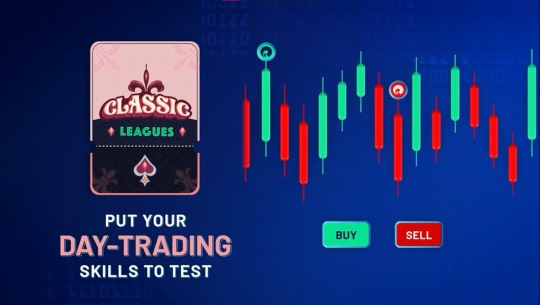
Classic Leagues is one of the most popular games on the app that allows players to compete with each other as they engage in day trading. The best part of this league is that it allows you to learn more about investing while also competing in an environment that is completely skills-based.
You can also check the Leaderboard here, which showcases the complete list of participants with their avatars and winning positions.
The key highlight of Classic League that distinguishes it from other paper trading apps is that the platform offers real-time charts for tracking price movements. Apart from this, you can also use the app to find the best time for purchasing/selling, giving you options for applying basic technical indicators.
Besides, you can also use the app to employ various strategies as you play the different games across the four leagues. Among these are-
2. Battle Leagues
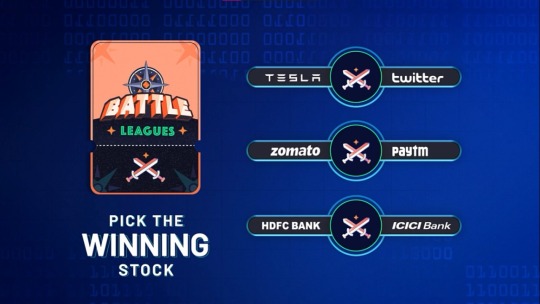
While playing battle leagues, players can learn various ways to compare stock prices and accordingly pick the best ones that suit their investment objectives.
3. Target Leagues
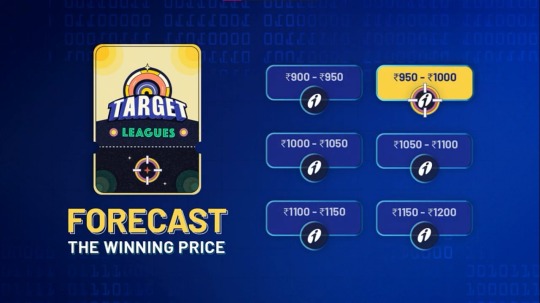
As the name suggests, Target leagues are games designed to help you learn how to analyse price charts and use various technical indicators to maximise profits.
4. Selection Leagues
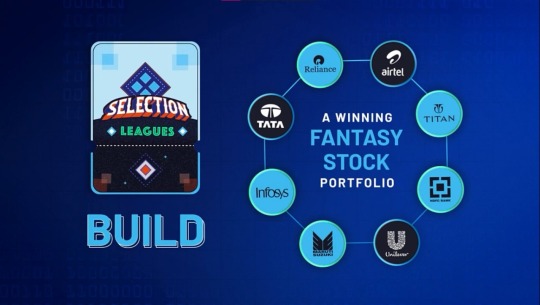
Selection leagues are another set of interesting games that help you practice ways to diversify your portfolio as per your respective investment objectives and risk appetite.
In Conclusion
While stock simulators are useful for practising trading in a real-world-like environment without risking actual capital, the mentioned downsides highlight their limitations. Playing fantasy stock market games such as TradingLeagues is a great alternative as they helps you understand how the market works. You can also use the app to enhance your skills for execution by testing various strategies across the games. The highlight of the app is that it lets you practice well before transitioning toward stock or cryptocurrency trading. To know more, explore TradingLeagues now.
0 notes
Text
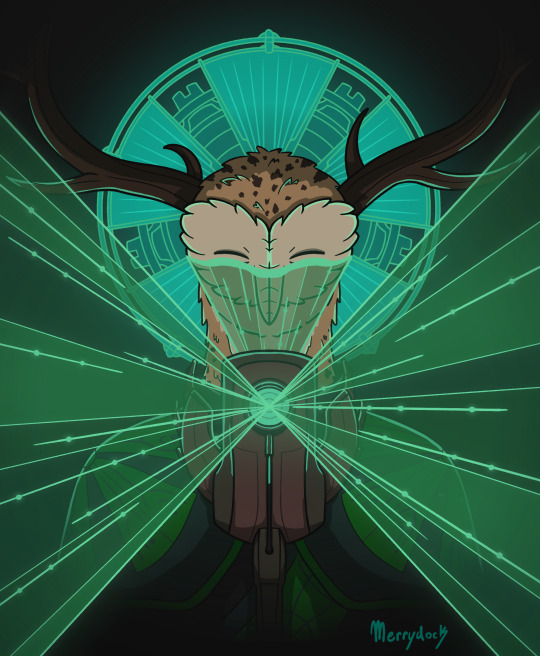
Some old art of my Owlk engineer, Eris, designing the Stranger's solar sails! Enjoy a big ramble about him and his job because I love this silly man:
Eris works on the design team for the Owlk space program, specialising in energy and propulsion technologies for the ships, satellites, and probes. Having a design philosophy of functionality and beauty, Eris enjoys going all-out with his work. He has received special recognition for his solar panel designs in particular, which borrowed from the unparalleled efficiency found in photosynthesizing plants.
When designing the Stranger's solar sails, Eris took inspiration from plants, but also the opening of insect elytra; the ballooning behaviours of silk-producing invertebrates, in which they sail from tree to tree using electric fields and air currents; and how flying creatures will use thermal updrafts to soar higher while expending less energy. Already familiar with how solar energy impacts technology from his work on solar panels, he proposed the use of this energy to propel the Stranger through space.
As travelling the distance between stars presented the major roadblock in the plan to reach the Eye (regarded as the Interstellar Propulsion Problem), Eris was lauded for his contributions, promoted to being one of the main engineers overseeing the Stranger's design.
More information about his general design process below!
When designing for a project, Eris uses all of the tools at his disposal. His first weapon of choice is always his pencil, and he will sketch out potential sources of inspiration on paper until the design concept begins to take form. Based on the initial project parameters he's been given, he drafts up a blueprint for his components.
Next, he must further conceptualise his designs. This is where the most valuable tool of the trade comes into play—the Vision Torch! Vision Torches serve many purposes for Owlks, from allowing them to nonverbally communicate to creating photographs from memory alone. Owlk engineers LOVE Vision Torches for how easy they make effectively communicating ideas. They allow concepts to be visualised in 3D, basic functionality to be shown through animations, and are even able to interface with computers. Eris might even 3D print a model using a Vision Torch to help him visualise his concepts as he works.
The space program is extremely collaborative, and Eris works on just a small part of the overall project, so being able to easily share ideas with others and see how all the individual components of a satellite or ship interact is vital. When discussing with more than a single other Owlk, Eris can use a Vision Torch linked to a holographic display to present concepts to a crowd. Concepts can also be tweaked in real time this way!

[Here's an example from the game of Owlks building the simulation with Vision Torches and a holographic display!]
With a Vision Torch, concepts can also be directly uploaded to a computer terminal. This is where a lot of the real work gets done - calculating weight, materials needed, stress testing in simulations, calculating trajectories, making precise tweaks to finalize the design, you name it. This also allows other Owlks working closely with Eris to access the most current design for their own tests.
This is an iterative process - as other Owlks finalize their components, as weight limitations are further restrained and material needs are calculated, Eris often has to go back to an earlier step and rework his concept. Fortunately, he thoroughly enjoys getting to be creative in his work (and doing math) and treats every project as a puzzle that needs to be solved! The only time when he's not excited to go back to the drawing board is when a last-minute adjustment from his peers means he needs to work long hours to get his work done in time for launch.
#outer wilds#outer wilds spoilers#echoes of the eye#echoes of the eye spoilers#outer wilds oc#my art#eris#my workaholic son#someone needs to tell him to take a break#please
69 notes
·
View notes
Text
Last year as a New Year's resolution I set out to play as many new games as possible for this year. I spend a lot of my time playing games as they are very endearing to me and one of my favorite ways to dive into in this life. I will now list all the games I played to completion this year. I am pretty happy with how many I managed to go through. Some I haven't necessarily finished as they are more open ended, but I'll still list them if I think I spent a respectable amount of time learning and toying with them. Anyway, vaguely in the order they were played: Final Fantasy IV Final Fantasy V Final Fantasy IX How Fish is Made Lethal Company Balatro Umineko When They Cry: Questions Arc Felvidek Signalis Papers Please Resident Evil 4 Metal Gear Solid S.T.A.L.K.E.R.: Shadow of Chernobyl S.T.A.L.K.E.R.: Clear Sky S.T.A.L.K.E.R.: Call of Pripyat Arctic Eggs Zelda: A Link to the Past Zelda: Ocarina of Time Fear & Hunger Darkwood Umineko When They Cry: Answers Arc Resident Evil 2 Casion Inc. Shovel Knight: Treasure Trove (All campaigns) Vampire: The Masquerade - Bloodlines Merchant of the Skies STONKS-9800: Stock Market Simulator The Invisible Hand Offworld Trading Company UFO 50 WEBFISHING Recettear: An Item Shop's Tale The Legend of Heroes: Trails in the Sky Planescape: Torment: Enhanced Edition E.Y.E: Divine Cybermancy Fallout: Sonora (with Dayglow DLC) Half-Life 2 Episode 1 The Age of Decadence Half Life 2 Episode 2 Citizen Sleeper Dark Souls 2 Black Mesa
Pretty good I think. I recommend this approach if you have any interest in games, to just play as many new ones as you can. Just pick a direction and keep going. This list is incomplete because I probably still can sneak in another two games.
If there are any games you'd like me to check out (More likely to happen if they are obscure and on the shorter end), I'd love to hear it. I think I will keep this pace for next year as well. Edit: A few more games I played/finished after making this: INDIKA Decarnation Pathologic HD Moon Remix RPG
70 notes
·
View notes
Text
Welcome!
Hello and welcome to The Neopian Biology Project!
This blog is an offshoot of a series of posts started on my main account. It is run by me, @asterixcalibur, in association with Happy Lab Accidents on @cabletwo. I'm an artist and funny person by trade, but a biologist by tragic BDGilbertian retribution.

The goal of this project is to identify all of Neopia's unique species, categorize them by kingdom and region of origin, and find an ideal specimen for each that can be put into a natural history museum (my gallery on Neopets). As of writing, the project has identified over 2000 unique species of Neopian wildlife.
Our main methodology is scouring item descriptions for helpful information. This process also involves researching and standardizing the taxonomical, ecoregional, and evolutionary timeline terminology of Neopia.
Longer term goals are to obtain the ideal specimen of every identified species for the museum, and renovate the museum into a simulated museum experience through careful application of visual assets and CSS/HTML. Maybe one day we can shoot for the Gallery Spotlight?
On Neopets
My account on Neopets is classypotassium. Feel free to ask to be NeoFriends -- just tell me who you are here!
The Neopian Biological Sciences Natural History Museum itself is here.
Ways to Contribute
1. Donate a specimen
If you'd like to donate or loan a specimen to the museum, contact me so we can discuss attribution and collateral!
The gallery's JellyNeo wishlist is here. It will be continually updated as specimens are identified, so consider it a work in progress. As of writing I also haven't checked anything off even if it's been obtained, so double check the museum before offering donations!
2. Donate Neopoints
You can also "donate" by buying a Plushie Fungus from my shop! These are intentionally overpriced so that the change can be considered a charitable donation.
3. Interact here!
A lot of the posts that end up here are going to be asking for people's thoughts on origin, kingdom, uniqueness, and so on, through polls and direct questions.
You can also submit items, images, links, art, specimens, fossils, documentation, scientific papers, primary sources, etc. and so on, for consideration by the Project!
You don't need to know anything about Neopets to put in your two NP (or cents USD). In fact, sometimes it's better to get a perspective grounded in normal Earth biology, because, speaking as a biologist here in Neopia, I can very well say oh ym god please help ohhhh my god you don't even know
Conclusion
You don't need to be into Neopets to enjoy or contribute to this blog; I'll try my best to write posts so that they can be enjoyed by anyone aware of but not necessarily into Neopets. In my experience, explaining Neopets to someone entirely unfamiliar with it is always fun. This shit runs deep, dark, and as spaghetti as its code. Best part of Neopets, to me, is that the site rewards you for exploration, and some of the most consequential but by far weirdest lore can only be found by happening upon a page six links deep into a chain of site features that have gone untouched since 2009, as part of a philosophy of interaction that runs the entire site and is entirely against modern website design principles.
Anyway,

Thank you for visiting!
Science awaits!
56 notes
·
View notes
Text
Interesting Papers for Week 13, 2025
Representational drift in barrel cortex is receptive field dependent. Ahmed, A., Voelcker, B., & Peron, S. (2024). Current Biology, 34(24), 5623-5634.e4.
Monkeys engage in visual simulation to solve complex problems. Ahuja, A., Yusif Rodriguez, N., Ashok, A. K., Serre, T., Desrochers, T. M., & Sheinberg, D. L. (2024). Current Biology, 34(24), 5635-5645.e3.
Theta oscillations optimize a speed-precision trade-off in phase coding neurons. Amil, A. F., Albesa-González, A., & Verschure, P. F. M. J. (2024). PLOS Computational Biology, 20(12), e1012628.
Semantic relatedness proactively benefits learning, memory, and interdependence across episodes. Bennion, K. A., Phong, J., Le, M., Cheng, K., Wahlheim, C. N., & Antony, J. W. (2024). eLife, 13, e95480.3.
Efficient value synthesis in the orbitofrontal cortex explains how loss aversion adapts to the ranges of gain and loss prospects. Brochard, J., & Daunizeau, J. (2024). eLife, 13, e80979.
Prediction-based false memory: Unconfirmed prediction can result in robust false memories. Bulatova, O., & Fukuda, K. (2025). Cognition, 255, 106013.
Perceptual constancy for an odor is acquired through changes in primary sensory neurons. Conway, M., Oncul, M., Allen, K., Zhang, Z., & Johnston, J. (2024). Science Advances, 10(50).
Exploring the hierarchical structure of human plans via program generation. Correa, C. G., Sanborn, S., Ho, M. K., Callaway, F., Daw, N. D., & Griffiths, T. L. (2025). Cognition, 255, 105990.
Discrete Synaptic Events Induce Global Oscillations in Balanced Neural Networks. Goldobin, D. S., di Volo, M., & Torcini, A. (2024). Physical Review Letters, 133(23), 238401.
Sculpting new visual categories into the human brain. Iordan, C. R., Ritvo, V. J. H., Norman, K. A., Turk-Browne, N. B., & Cohen, J. D. (2024). Proceedings of the National Academy of Sciences, 121(50), e2410445121.
Rapid, systematic updating of movement by accumulated decision evidence. Molano-Mazón, M., Garcia-Duran, A., Pastor-Ciurana, J., Hernández-Navarro, L., Bektic, L., Lombardo, D., de la Rocha, J., & Hyafil, A. (2024). Nature Communications, 15, 10583.
A computational approach to the N-back task. Ni, L., & Ma, W. J. (2024). Scientific Reports, 14, 30211.
Social conformity is a heuristic when individual risky decision-making is disrupted. Orloff, M. A., Chung, D., Gu, X., Wang, X., Gao, Z., Song, G., Tatineni, C., Xu, S., Casas, B., & Chiu, P. H. (2024). PLOS Computational Biology, 20(12), e1012602.
Parallel development of object recognition in newborn chicks and deep neural networks. Pandey, L., Lee, D., Wood, S. M. W., & Wood, J. N. (2024). PLOS Computational Biology, 20(12), e1012600.
Intermittent rate coding and cue-specific ensembles support working memory. Panichello, M. F., Jonikaitis, D., Oh, Y. J., Zhu, S., Trepka, E. B., & Moore, T. (2024). Nature, 636(8042), 422–429.
Memory reactivation generates new, adaptive behaviours that reach beyond direct experience. Rawson, A. B., Nalluru, S., O’Reilly, J. X., & Barron, H. C. (2024). Scientific Reports, 14, 30097.
Neuronal circuit mechanisms of competitive interaction between action-based and coincidence learning. Rozenfeld, E., & Parnas, M. (2024). Science Advances, 10(49).
Representation of a perceptual bias in the prefrontal cortex. Serrano-Fernández, L., Beirán, M., Romo, R., & Parga, N. (2024). Proceedings of the National Academy of Sciences, 121(50), e2312831121.
Vector coding and place coding in hippocampus share a common directional signal. Zhou, Y.-Q., Puliyadi, V., Chen, X., Lee, J. L., Zhang, L.-Y., & Knierim, J. J. (2024). Nature Communications, 15, 10630.
Value construction through sequential sampling explains serial dependencies in decision making. Zylberberg, A., Bakkour, A., Shohamy, D., & Shadlen, M. N. (2024). eLife, 13, e96997.3.
#neuroscience#science#research#brain science#scientific publications#cognitive science#neurobiology#cognition#psychophysics#computational neuroscience#neural computation#neural networks#neurons
8 notes
·
View notes
Note
Hi guys I'm Telia Aguilar welcome to the telias-blog my ocs Caillou, fairly Odd parents, fundamental paper education, American Dad, Ramshackle, South park, bluey, sprunki, SpongeBob SquarePants, spooky month, panty and stocking with garterbelt, the marvelous misadventures of flapjack, my hero academia, neon Genesis evangelion, dog man, the music freaks, eddsworld, genshin impact, FNF, Yandere simulator, amliimocha, Dan vs, MMD, Cuphead show,
I love my ocs how favorite ocs characters
Favorite TV show
Caillou, fairly Odd parents, American Dad, Ramshackle, kizniaver, South park, bluey, SpongeBob SquarePants, spooky month, panty and stocking with garterbelt, the marvelous misadventures of flapjack, my hero academia, Hina loves again, neon Genesis evangelion, konsuba, the music freaks, eddsworld, Dan vs, cuphead show, vandread, 86 eighty six,
Favorite movie
Dog man 2025, heart eyes 2025, wicked, Moana 2, Rugrats In Paris movie, inside out, Grinch 2018, lost city 2022, Bob's burgers movie, sonic the hedgehog 3, paw patrol the mighty movie, Fnaf movie, Barbie 2023, sing 2, Spy x family code white, trolls band together, Encanto, Haikyu dumpster battle,
Favorite games
Gacha life/club, super Mario party jamboree, animal crossing New horizons, Mario and Sonic Olympic games, Shoujo city 3D, magical girl critical, FNF, Roblox, crash bandicoot, streets of rage 4,
Favorite music artist and music band
Taylor Swift, Newjeans, Katseye, bounce patrol, Melanie Martinez, Stellar K-pop, Sabrina Carpenter, Ariana grande, Dua Lipa, Miley Cyrus, Kidz bop, Gonoodle, chole x Halle,
Favorite books
Don't let the pigeon stay up late, the pigeon will ride the roller coaster, Catch me catch me A Thomas the tank engine story, Hark A shark all about sharks, oh say can you say di-no-saur all about dinosaurs, Froggy's Lemonade stand, Peppa Valentine's Day, flora and ulysses,
Favorite artist
Ryeyumi, yxkizez, rosyclozy, Andrew Animations, kaikyuko, dirty dating games, Screen kisses, zolxter, onyx pookie, Zeddyzi, rapid hedgehog animationz, diamond Tiara, Kimmi the clown,
Tools of the trade
None,
Other interests
October 6 1993
Favorite Writers, Ramshackle show, Jeff and Abby, Ramshackle gets grounded, Telia and friends, and more,
Favorite gaming platform
Xbox one, PlayStation, Nintendo switch, lunime, coco tabtale games, Kuma, games,
So, actually was it me cosplay, just say something
So, actually it's fine it was mine I done
I mean, how much does it matter if you can get a hold on your own
Boop
Yay I love that TV show and movies games musical artist/musical band and visual artist
Wow nice to meet you too I miss you how are you hi
Great job that was very nice and helpful
I trying not to on Text messages
So uh my phone number is 951-472-1499
Anything else My favorite relationship is Caillou, Timmy Turner, Stan Smith, skipp, Eric Cartman, SpongeBob SquarePants, flapjack, dog man, Petey, Jake Sterling, Tom eddsworld, Peanuts Charlie brown and snoopy,
Favorite Music artist group
Clean bandit Sabrina Carpenter Taylor Swift Newjeans Katseye bounce patrol Melanie Martinez and Bounce Patrol more
Favorite TV shows asdfmovie ramshackle Caillou the music freaks Baymax Eddsworld American dad Fairly odd parents Mickey mouse My hero academia Vandread
FAVORITE MOVIES
Minecraft movie Selena movie Paddington in Peru Dog man Heart eyes Wicked Barbie 2023 Encanto Trolls Band together
Favorite Games
Gacha Club Cookie run Magical Girl critical Roblox Crash bandicoot Streets of rage 4 and more
4 notes
·
View notes
Text
Forex Basics and Profit Plan for Jaipur
Learn key forex concepts, develop a clear trading plan, manage risks, and start your profitable forex journey in Jaipur confidently.
SOCIAL MEDIA LINKS https://x.com/profithill21263https://www.youtube.com/@edu.profithillshttps://www.facebook.com/Edu.profithills/https://www.linkedin.com/company/edu-profithills/https://www.instagram.com/edu.profithills/?hl=enhttps://in.pinterest.com/profithillseducation/
#Best Trading App#Best Trading App in India#Trading Course app#Forex and Crypto Trading App#Forex Trading for Beginners#Price Action Trading Strategy#How to Learn Trading#Free Online Trading Courses#Stock Market Trading Courses#Trading On The Stock Market#Financial Markets In India#How to Learn Stock Market Trading#Currency Exchange Trading#Best Forex Trading Platforms in 2024#Price Action Trading#Open a Forex Trading Account#Basic to Advance Trading#Technical Analysis in Forex Trading#Best Technical Indicator for Trading#Basics of Indian Stock Market#Paper Trading Simulator#Bearish Candlestick Patterns#Best Charting Software in India#Smart Money Concepts (SMC)#Objectives of Fundamental Analysis#Financial Markets in India#Bullish Candlestick Patterns#Double Top Chart Pattern#Free Price Action Trading PDF#Ascending Triangle Pattern
0 notes
Text
Do You Believe in Life After Tech? - A Critical Analysis of the Self-Optimization Focused Longevity Practices
The year is 2025. For an average human living in the territories dressed with internet cables, the day starts by grabbing the smartphone and consuming whatever the algorithm has to offer. From grocery shopping to becoming a millionaire overnight through crypto trades, everything seems possible from behind the screen. Societies are increasingly shaped by the very algorithms that dictate behaviors, tastes, and desires. From the frenzy of aesthetic surgery trends to the instantaneous viral success of products, from the commodification of reality to the proliferation of memes, we have become subjects of a culture where everything is recontextualized, reshaped, and hyper-real. Our daily lives and social habits are shaped by the algorithm we constantly labor to. The lines between the real and the simulated blur further, as Baudrillard whispers from the early days of the internet, "We live in a world where there is more and more information, and less and less meaning." (Baudrillard 1994:79). Here, meaning becomes a construct of virtuality, a mere image or simulation of the real. As our perception of reality becomes distorted in an AI-mediated fashion, whose pace of progress is beyond our perception of the pace of living, the human condition and social order are caught in a tension between the expectations of a world driven by accelerating technological advancements and the limitations of societies struggling to keep up. The contemporary condition whispers to us to either try and stay relevant or stay out of the picture. But even then, salvation is not guaranteed. In fact, nothing is guaranteed except the increasing quest for the relentless advance of an unchecked, accelerationist future.
This paper examines how the implications of contemporary accelerationist discourses of progress imply biopower and commodification of the subject by analyzing the longevity industry and public figures such as Bryan Johnson and viral self-optimization trends online. Through a critical analysis of the longevity industry, the paper aims to critically engage with the societal repercussions of accelerationist ideas.
#longevity#self optimisation#datafication#accelerationism#bryan johnson#nick land#don't die#blueprint
4 notes
·
View notes
Text
Learn Stock Trading Basics

What is Trading in the Stock market?
Trading in the stock market involves the exchange of ownership in companies through the buying and selling of shares. It is a dynamic process driven by various factors such as market sentiment, economic indicators, and company performance. With the advent of online trading platforms, participation in the stock market has become more accessible to a broader range of investors. Let's delve deeper into the nuances of stock market trading, including its types, merits, demerits, precautions, and suitability for different types of traders.
Understanding Stock Market Trading
Stock market trading encompasses the buying and selling of shares of publicly listed companies. It operates on stock exchanges, where investors trade securities such as stocks, bonds, and derivatives. Trading can occur in various time-frames, from intraday trading to long-term investing. Here are some common types of stock market trading:
1. Day Trading: Day traders buy and sell stocks within the same trading day to capitalize on short-term price movements. They aim to profit from volatility and liquidity in the market.
Example: A day trader buys 100 shares of Company X in the morning at Rs. 50 per share and sells them later in the day at Rs. 55 per share, pocketing a Rs. 500 profit.
2. Scalping: Scalpers make small profits from quick trades executed within minutes. They aim to exploit small price fluctuations and high trading volumes.
Example: A scalper buys 1000 shares of Company Y at Rs. 10.10 per share and sells them a few minutes later at Rs. 10.15 per share, making a Rs. 50 profit.
3. Swing Trading: Swing traders capitalize on short-term stock trends over a few days to several weeks. They aim to capture price swings within the broader market trend.
Example: A swing trader buys 200 shares of Company Z at Rs. 75 per share and sells them a week later at Rs. 85 per share, earning a Rs. 2000 profit.
4. Momentum Trading: Momentum traders take advantage of a stock's strong upward or downward movement, riding the momentum for potential profits.
Example: A momentum trader buys 300 shares of Company W after it announces positive earnings, anticipating further price appreciation.
5. Positional Trading: Position traders hold stocks for a few days to months, aiming to benefit from long-term growth trends.
Example: A positional trader buys 500 shares of Company V with the intention of holding them for six months to capitalize on expected industry growth.
Advantages of Stock Market Trading
1. Potential for High Returns: Successful trading can yield substantial profits, especially for traders who employ effective strategies and risk management techniques.
2. Liquidity: The stock market is highly liquid, allowing traders to buy and sell securities with ease, often at competitive prices.
3. Diversification: Trading provides opportunities to diversify investment portfolios across different asset classes, sectors, and regions, reducing overall risk.
Disadvantages of Stock Market Trading
1. Risk of Losses: Trading in the stock market carries inherent risks, including the potential for significant losses, especially for inexperienced or over leveraged traders.
2. Volatility: Market volatility can lead to rapid price fluctuations, making it challenging to predict future price movements accurately.
3. Emotional Stress: Trading can be emotionally demanding, leading to stress, anxiety, and impulsive decision-making, which can adversely affect trading performance.
Precautions in Stock Market Trading
1. Education and Research: Gain a thorough understanding of the stock market, trading strategies, and risk management principles through education, research, and continuous learning.
2. Risk Management: Implement effective risk management techniques, such as setting stop-loss orders, diversifying portfolios, and avoiding over leveraging.
3. Create Discipline and Patience via Virtual Trading: Develop disciplined trading habits and exercise patience, avoiding emotional reactions to market fluctuations and sticking to predetermined trading plans.
Who Can Benefit from Stock Market Trading?
Stock market trading is suitable for various types of investors, including,
Individual Traders:
Retail investors who actively participate in the market to generate income or build wealth.
Institutional Investors:
Professional fund managers, hedge funds, and investment firms seeking to achieve superior returns for their clients.
Day Traders:
Traders who execute multiple trades within a single day, aiming to profit from short-term price movements.
Swing Traders:
Traders who capitalize on short-term trends over several days to weeks, balancing risk and reward.
Long-Term Investors:
Investors who take a buy-and-hold approach, focusing on the long-term growth potential of quality companies.
In conclusion, stock market trading offers opportunities for investors to profit from the dynamic movements of financial markets. However, it requires a solid understanding of market dynamics, disciplined trading strategies, and effective risk management. By carefully considering the merits, demerits, and precautions associated with trading, individuals can navigate the stock market effectively and achieve their financial goals.
#stock market#stock trading#equity trading#investing#financial literacy#learn stock market trading#paper trading#virtual trading#finance#long term trading#intraday trading#stock market india#stock market simulator
0 notes
Text
When I was in elementary school, one of our teachers ran a little activity for the class.
Maybe it had something to do with the curriculum (do they talk about money and markets in social studies these days?), maybe it was one of those end-of-year things, but they told the class to figure out a good or service they could offer in a simulated market the school was running. We'd be trading fake currency to spend at another class' "market" that we would earn from our own.
It was, of course, a bunch of 5-7 year olds, so most people went to their parents for help. A lot of people did baked goods - every child loves treats - and you could tell who had the time (and real money) to spend making cute little displays for their child's desk, or little signs to put up as "advertising." These were kids whose mothers were home a lot, if they worked at all, and had all the time in the world to help little Timmy or Jana make some brownies with sugar flowers on top.
I was not one of those kids.
My parents didn't have time or money to spare on something like this. I couldn't go ask Mom to take several hours out of an already busy day to buy and make baked goods for a silly class activity, and I certainly couldn't conjure up free craft material to make decorations for them, or trinkets (the other common choice of product) to mold/paint/carve and carry around until presentation time.
I showed up to "market day" with a pack of wet wipes - a desk cleaning service. Kids are messy and sticky, someone's probably got gunk in their desks they want gone. I figured I'd get one or two people, trade their tokens for one treat, and live with it. It was cheap, because that's all I could afford or carry. My desk was laughably empty compared to the trays and tables of items around me. Still, I had some hope left; surely someone would...?
Out of my entire class, I was the only one to get nothing. The only one. When we were led out to another class' market, I just. Stood there. Wandered past desks of things I couldn't have. Waited for our time to be up, hoping no one noticed I was the only one empty-handed.
I remember our teacher awkwardly watching me, clearly embarrassed and maybe sympathetic, but they didn't do anything. I wouldn't have asked them to, and I doubt they would have: rules were rules. Ironically, in created this little market simulation, they'd also recreated class inequality. Everyone else, with well-off parents and pretty little shops; me, the kid from a working family with the little we could afford.
I remembered this day for the first time in a while, a months ago; I'd been working on a piece for my nonfiction course, and scouring my memory for that dug up other moments I'd forgotten about. I remember feeling so... humiliated isn't the right word, but it's close. It wasn't about the tokens. It wasn't about the treats (although I was upset about that too.) It was about the fact that this only happened because by emulating that system, we emulated its flaws too. I didn't know the words for it at 7, but I knew there was something wrong. Something broken about this.
In middle school, they started giving us online homework for classes, because everyone has a computer now! Except the people who can't afford one and have to book an hour at the library to do work that would take 20 minutes on paper; I was one of those people. A video game I played started tying their physical content (think discs and character stands with chips inside) to updates delivered through internet, because everyone's online now! Except the people who can't afford internet right now and have gifts from well-meaning friends collecting dust in drawers; I was one of those people (didn't have cable/TV either.) Organizations put all their info on Facebook or Instagram, because everyone's on social media, of course! Everyone has a phone! Everyone has a car! Everyone has internet! Everyone has power! Everyone has hot water!
Except the people who don't. But no one really cares about those people, do they?
To be clear, neither I nor my family has worried about affording food or a place to stay or utility bills, and I know that not everyone is so lucky. I'm aware that I've had as much privilege as struggle in my life. I know this. Financially? We're fine. I'm fine. I know this.
I know this, and I still guilt myself over one $5 ~frivolous~ purchase. I still hesitate spending money on anything I can convince myself isn't necessary. I still worry that what I have, I have for now - and that could change very, very quickly. I still think like this even though I haven't been at that precipice, because I know I'm not all that far from it.
Growing up juuuust barely alright, not poor but not quite well-off either, that fear is ingrained in me. For people who've been to, and beyond, that edge, I can only imagine how deep those hooks are.
And no one past the threshold of "fine" will ever know that fear.
Bezos has never hesitated before buying another mansion. Musk can drop millions into elections like it's pocket change. No CEO will ever consider their finances before booking a private jet. But they'll still write condescending articles about skipping the avocado toast if you want to buy a house.
They have no idea what it's like to live like that, but they're so sure that it's easy to escape. They're so sure that if you just stop buying these 5 things, get a second job and a loan from your parents, use the money you don't have to create a business you can't afford, and ask your nonexistent rich uncle to pull strings at CompanyCorp to get you a nice desk job, you'll be Rich in no time! Don't those stupid poors know that if you only buy necessities, you'll save so much money? Emergencies? What emergencies? You can afford one hospital bill, can't you? And do you really need food? Honestly, why aren't you just making everything at home using the fully stocked kitchen you definitely have? You don't have a home? Ew, homeless people are so gross, why can't they shower in the bathroom they obviously have? Maybe you just want to stay poor. Maybe you deserve to be poor. After all, if you deserved money, you would have it already. Pay no attention to the billionaire behind the podium.
#possumposting#anti capitalism#rant#shoutout to that time I ran the numbers on the food I ate and realized I was hungry all the time bc my college diet#was just over 1k calories with only the three meals + juice#which I did bc I was guilty over snacking all the time (and thus buying snacks so often)#that was a fun day
3 notes
·
View notes
Text
While Trump is back to publicly criticizing Zelensky, and accusing him of standing in the way of a deal with Russia, the U.S. is still actively supporting Ukraine in a proxy war against Russia. At the same time, the Trump Admin is also planning for war with China and supporting Israel amid reports of plans for its attack on Iran.
Brian Berletic, a geopolitical analyst and Host of The New Atlas, noted that while talks may be ongoing, it doesn’t change the fact that the U.S. is fighting a war against the Multipolar world—and Russia, Iran and China are the pillars of multipolarity.
That’s why this 2009 policy paper from the Brookings Institute titled, “Which Path to Persia?” has a chapter called “Leave it to Bibi: Allowing or encouraging an Israeli Military strike,” in which they present a scenario where Israel attacks Iran, after Tehran rejects a deal from the U.S. (sound familiar?)
Follow Brian Berletic on X, and check out The New Atlas
SOURCE LINKS:
19 April 2025 - Israel still eyeing a limited attack on Iran's nuclear facilities
21 April 2025 - Israeli Air Force said to hold drill simulating another Iranian missile attack
22 April 2025 - Brian Berletic on X: “The US plan for war with Iran always included options to have Israel strike Iran on Washington's behalf with fake talks used to provide the US plausible deniability. This is spelled out in detail in policy papers including Brookings’ ‘Which Path to Persia?’ report from 2009.”
6 March 2012 - US think-tank admits Iran is not a threat to either US or Israeli security, devises narrative to sell unnecessary war to public
22 April 2025 - Trump Says He’s Aligned With Netanyahu After Call on Iran, Trade
21 April 2025 - Iran to brief China as it accuses Israel of ‘undermining’ US nuclear talks
22 April 2025 - US Treasury secretary says trade war with China is not ‘sustainable’
23 April 2025 - White House Considers Slashing China Tariffs to De-escalate Trade War
4 notes
·
View notes
Note
please share more abt the fankids I think they’re so cool !!!
aaa thank you! a quick summary of their concept (spoilers for the HSS propogation quests and Penacony storyline!):
Ruan Mei pushing against the boundaries of genetic engineering again, practicing her work at DNA replication and gene synthesis before perfecting it fully to continue her project with Tazzyronth. She teams with one Dr. Veritas Ratio in workshopping a method of short-term life forms that would age rapidly, to study the process of decay and growth in order to tweak it in later tests down the line.
The life forms in question? intelligent organisms born from meshing genetic sequences from material donated (or subtly stolen in some way). The test subjects are cultivated, given a strict curriculum, an extensive wealth of online and archived knowledge to learn from and test their talents. TLDR: we made fankid love children from characters in HSR.
——————————————————————-

CAVAE RATIO: (Ratio // Aventurine)
[imaginary Remembrance 💠💠💠💠]
- take Aventurine’s knack for convoluted machinations and Ratio’s intense drive towards a singular goal: Goldberg Slot Machine!
- A workaholic mechanic with a talent for both the hardware and software of their projects, dabbles in abstract inventions
- Don’t tell them about transhumanism there will be no going back

GAIUS RATIO: ( Ratio // Ruan Mei )
[fire Erudition 💠💠💠💠💠]
- This kid’s defining, persistent curiosity stems from both parents. Combine it with Ruan Mei’s connections to the organic, with Ratio’s more clinical perspectives of logic into a physical sense: faux flora, paper flowers, and a wistful wanderlust
- They want to see the world outside their ivory tower of academia, and to learn first hand about the universe itself. Excitedly dogs the poor scientists handling everyone’s monitored exams to reply to Gaius’ questions for once- “A test! Answer me!”
- The Little Prince in a tower, having read all the books they own ten times over
- Gaius and Cavae are technically siblings, sharing Dr. Ratio as a donor! they treat each other as such and use nicknames for one another (GaiGai and CaeCae respectively)


“APOLLYON”: ( Dan Feng // Yingxing )
[wind Hunt 💠💠💠💠💠]
- Current design is on the left. prototype concept on the right!
- Not much information is disclosed about this subject’s donors. Nothing Ruan Mei could properly obtain from the Xianshou Ten-Lords Commission, at least. Perhaps Apollyon’s dogged determination to both learn everything about their ‘parents’, as well as defy whatever assumptions are made about themselves, are traits passed down altogether
- Very big fan of the legal system. The orderly process of a court trial is appealing to them. They’ve also thrown themselves into the law to subvert Dan Feng and Yingxing/Blade’s history of criminal notoriety
- Technically the oldest, but not the *eldest*. Because of their Vidyahara genetics, he still has a baby face (gets teased for it). The subjects all still age faster than normal though

“BELPHAGOR”: (J▪️n▪️ ▪️▪️an // ▪️▪️▪️▪️ ▪️▪️▪️▪️▪️▪️▪️▪️)
[electric Abundance 💠💠💠💠]
- If Apollyon’s donor information is hard to uncover, then Belphagor’s is buried under centuries of incryption, perhaps never even being added to the databank in the first place. Or— out of the spirit of secrecy disguised as easy transparency— the info was scrubbed some time after being inputted
- Calm, collected, with connections throughout the Herta Space Station and beyond. Belphie even has routine ‘storyboarding’ sessions with Madame Herta and her Genius coworkers. Their secret contributions to the flavor text of the Simulated Universe help weave the story into a cohesive narrative, tricks the AI into believing the fabrication more easily
- Also has game nights with a slippery hacker online. They trade the #1 spot for the universal high score of Puyo Puyo Tetris III Deluxe Online (sponsored by the IPC’s entertainment branch)

“MATEO” : ( Boothill // Argenti )
[physical Destruction 💠💠💠💠💠]
- Mateo has a fair amount of information about his donors. No matter how many files he can access to read about them, though, he still craves a true connection. He doesn’t just want donors— he wants parents. Maybe that Curio he swiped from Herta’s collection could be his ticket off the station?
- Headstrong, steadfast, impatient, and honest. Desperately wants to prove himself through acts of valor and impulse snap decisions to help others. His heart’s in the right place
- the Curio he swiped? turns into a biplane. when not in flight mode? turns into a JETPACKKKKKKK YEAAHH BABY




MISC. INFO: ( Bullshit // Braindump)
- Mateo and Gaius first met each other while Mateo was testing his Curio’s jetpack function outside the HSS. Gaius saw him through the window, enthusiastically wrote notes on big slats of paper to communicate, and they were stuck by the hip ever since
- Cavae has a habit of self-isolation and social withdrawal when having emotional struggles. They drown themselves in their inventions without any time to bond with the others. The other kids have tried to reach through to them, Gaius and Apollyon especially, but the only progress made is when Cavae does it themselves
- Apollyon loves to put on mock trials. Belphagor and Gaius, the most skilled writers in the group, often create theater performances or fake court trials for Apollyon to play the Prosecutor for. Cavae contributed the props and stage tech, with Gaius and Mateo playing as secondary roles. Mateo often gets put as the Judge so he can have a fake beard (but he puts on the best show as the convict)
- Gaius is skilled at origami
- Belphagor is on the most amicable terms with Ruan Mei. Mostly because, out of all the subjects, they’re the one most willing to *accept* being a test subject. Thus they hold no hard feelings towards Ruan Mei about the experiment they’re born from
- Ratio has a check-up scheduled to interview his subjects coming up. The reminder got sent in the mail, though a particularly nosy merchant may have rummaged through his deliveries while the good Doc was running a bath.
3 notes
·
View notes
Text
The Evolution of BIM: From 2D Drafting to 7D BIM

The construction industry has witnessed a remarkable transformation over the past few decades, driven by technological advancements. One of the most significant innovations is Building Information Modeling (BIM). What started as simple 2D drafting has evolved into a comprehensive system encompassing multiple dimensions. From design to maintenance, BIM has revolutionized the way we plan, construct, and manage buildings. In this blog, we will explore the journey of BIM from its early days to the highly advanced 7D BIM we see today.
The Era of 2D Drafting: The Beginning
Before the advent of BIM, architects, engineers, and designers relied on 2D drafting techniques. Blueprints and technical drawings were manually created on paper, requiring immense precision and effort. The introduction of computer-aided design (CAD) in the 1960s and 1970s brought a significant shift, allowing professionals to create digital 2D drawings. However, these drawings remained static representations, often leading to errors, miscommunication, and time-consuming revisions. The lack of data integration meant that project information was scattered, leading to inefficiencies in project execution and management.
Moreover, 2D drafting required extensive manual labor for each stage of the design process. Any changes in the design had to be redrawn from scratch, consuming valuable time. Coordination between different teams was also challenging, as changes in one discipline often led to inconsistencies in others. Errors were only discovered during construction, resulting in costly rework and delays. Additionally, quantity take-offs and bill of materials (BOM) had to be calculated manually, increasing the risk of miscalculations and cost overruns.
The Transition to 3D Modeling: A Game Changer
The limitations of 2D drafting led to the development of 3D modeling. In the late 20th century, software like AutoCAD, Revit, and ArchiCAD introduced the concept of three-dimensional design. 3D modeling provided a more realistic and detailed representation of structures, improving visualization and coordination among stakeholders. Architects and engineers could now see their designs in a virtual environment before construction began, allowing for better planning and reducing costly errors.
Unlike 2D drawings, 3D models allowed for a more intuitive understanding of spatial relationships. Teams could detect clashes between different systems, such as plumbing and electrical, before construction, leading to a significant reduction in errors. However, despite the added dimension, it still lacked data integration and intelligence, as it mainly focused on geometry rather than project information management. At this stage, Level of Development (LOD) concepts started emerging, enabling different stakeholders to define and refine the details of the BIM model at different stages of the project lifecycle.

4D BIM: Adding the Time Dimension
The next breakthrough in BIM came with the introduction of the fourth dimension: time. 4D BIM integrates project scheduling with 3D models, enabling stakeholders to visualize the construction sequence over time. This advancement improved project planning, reduced delays, and enhanced collaboration among teams. Contractors could simulate different scenarios, identify potential bottlenecks, and optimize construction workflows.
By linking the construction timeline to the 3D model, project managers could anticipate potential issues, allocate resources efficiently, and ensure smoother project execution. 4D BIM allowed teams to see when each component of the project would be constructed, facilitating better coordination between trades and minimizing on-site conflicts. As a result, construction projects became more predictable, reducing downtime and increasing efficiency.
5D BIM: Incorporating Cost Management
Cost estimation has always been a critical aspect of construction projects. 5D BIM brought financial management into the equation by linking cost data with the 3D model and project schedule. This integration provided accurate cost forecasting, real-time budget updates, and improved decision-making. Stakeholders could analyze cost variations, track expenses, and ensure financial control throughout the project lifecycle.
With 5D BIM, cost estimators and project managers could evaluate different design alternatives and their financial impact, ultimately helping in budget optimization and cost-effective decision-making. Cost changes due to material choices, design modifications, or construction sequences could be assessed in real time, preventing budget overruns. Automated quantity take-offs became more efficient and accurate, ensuring that project cost estimates aligned closely with actual construction costs. This real-time tracking of costs made construction more financially transparent, ensuring stakeholders had a clear understanding of budget allocations at every stage.
6D BIM: Enhancing Sustainability and Facility Management
As sustainability became a key focus in the construction industry, 6D BIM emerged to address environmental concerns. This dimension incorporates energy analysis, lifecycle assessment, and sustainability metrics into BIM models. Building owners and facility managers can use 6D BIM to optimize energy efficiency, reduce carbon footprints, and plan for long-term maintenance.
Additionally, it aids in predictive maintenance by providing insights into building performance over time. With real-time data and simulations, sustainability goals such as energy efficiency, material durability, and operational cost reductions can be achieved, ensuring environmentally responsible building designs. Green building certifications such as LEED and BREEAM can be seamlessly integrated into the BIM model, allowing for data-driven decision-making in sustainability planning.
By leveraging 6D BIM, facility managers can track energy consumption, perform preventive maintenance, and monitor the building’s carbon footprint. It enables owners to make data-driven decisions that enhance the building’s efficiency and extend its lifespan, ultimately leading to significant cost savings and environmental benefits. COBie (Construction-Operations Building Information Exchange) standards also play a critical role at this stage, ensuring that asset data is structured and efficiently transferred for use in facility management.
7D BIM: The Future of Building Management
The most advanced stage of BIM, 7D BIM, integrates facility management with real-time data. It allows stakeholders to manage the entire lifecycle of a building, from design to demolition. By incorporating asset management, maintenance scheduling, and IoT integration, 7D BIM enhances operational efficiency and reduces maintenance costs.
Building owners can track the performance of building components, automate maintenance tasks, and ensure long-term sustainability. With the growing adoption of smart buildings and IoT-enabled systems, 7D BIM is paving the way for more connected, efficient, and resilient building management practices. Facility managers can use digital twins of buildings to simulate operational scenarios, predict maintenance needs, and improve asset longevity.
Through integration with IoT, sensors can provide real-time data on occupancy, temperature, and equipment performance, enabling automated responses and predictive maintenance. This not only enhances comfort and safety but also significantly reduces operational costs, making 7D BIM an essential tool for modern building management. Furthermore, as-built BIM models ensure that facility managers have an accurate digital representation of the constructed building, enabling informed decision-making throughout the building’s lifecycle.
Benefits of BIM Evolution:
Here are some expanded benefits of BIM evolution:
Improved Collaboration and Coordination Accurate Quantity Take-Offs and Cost Estimation Reduced Errors, Rework, and Risks Enhanced Time Management and Scheduling Improved Facility Management and Lifecycle Analysis Sustainability and Energy Efficiency Higher Level of Development (LOD) for Better Detailing
Conclusion
The evolution of BIM has transformed the way we design, construct, and manage buildings. From simple 2D drawings to the intelligent and data-driven 7D BIM, the construction industry has embraced a new era of efficiency, sustainability, and innovation. As technology continues to advance, we can expect even more dimensions and capabilities to be integrated into BIM, shaping the future of architecture and engineering. Whether you are an architect, contractor, or building owner, understanding and leveraging BIM is no longer an option but a necessity for success in the modern construction landscape.
1 note
·
View note
Text
i have grown tremendously as a technician since getting my current job and i would not trade it back because it has increased the boundaries of my creative sandbox 100fold and also lent me a degree of innate Understanding when it comes to machine generated imagery. but
it has come at the cost of like. the sort of perplexed dumbstruck fascination when looking at an image/moving image that i didn’t quite Get processwise. which drew me into this crevice here in the first place. now that ive advanced into the Getter my usual sources for strange, dreamlike imagery made by computers are less potent
like i used to frequent fruitsoftheweb and look at out of context soft body simulations and be like “why are they doing that to that teapot/rabbit/jade dragon statue” but now im out here reading the papers and mining them for algorithms
29 notes
·
View notes